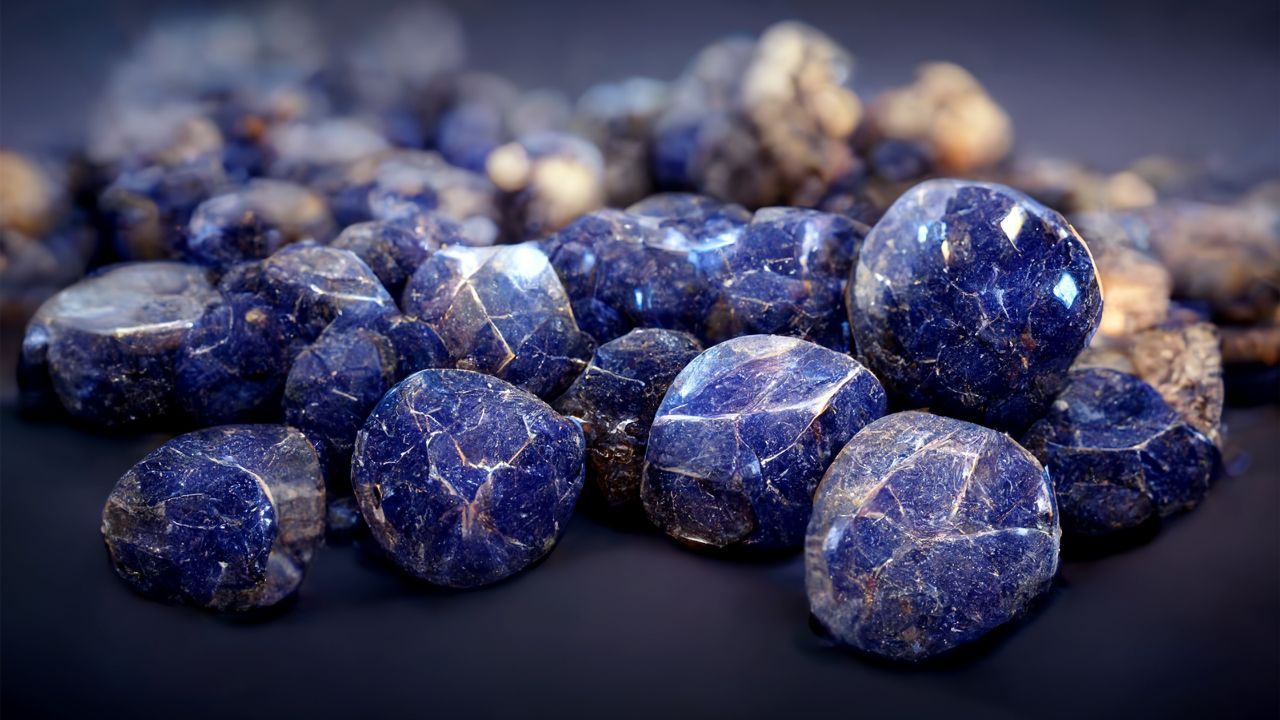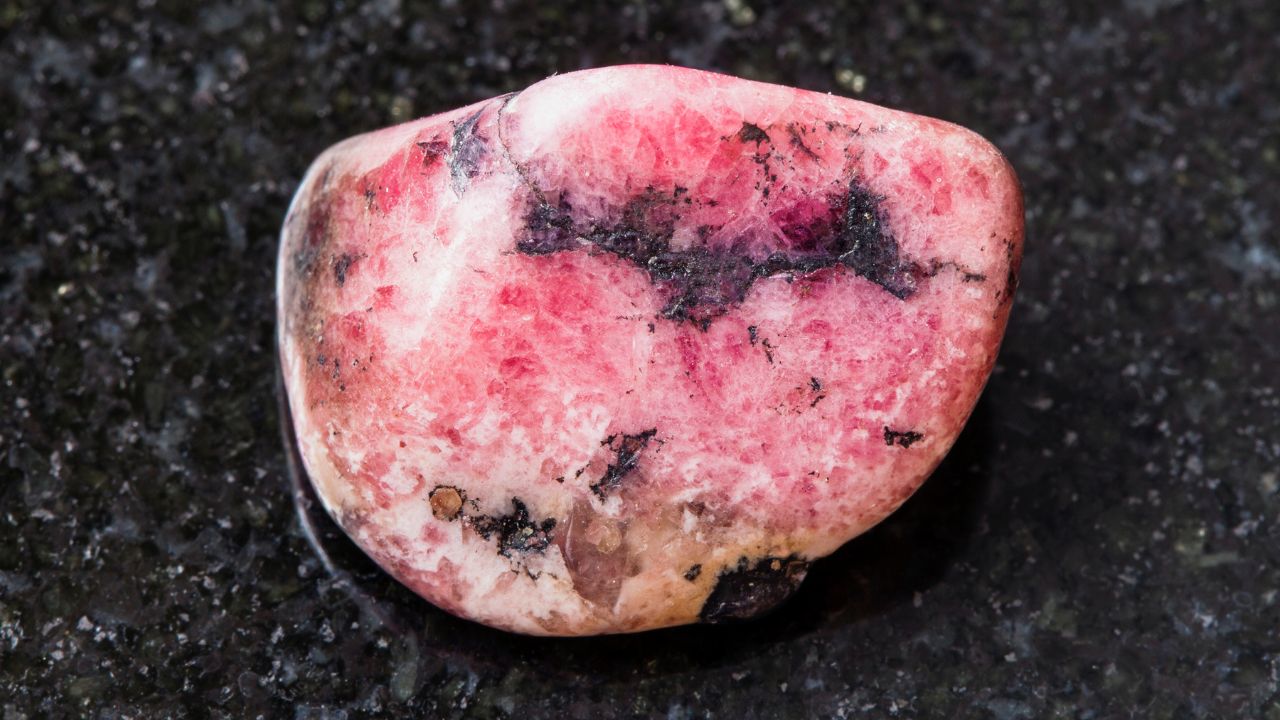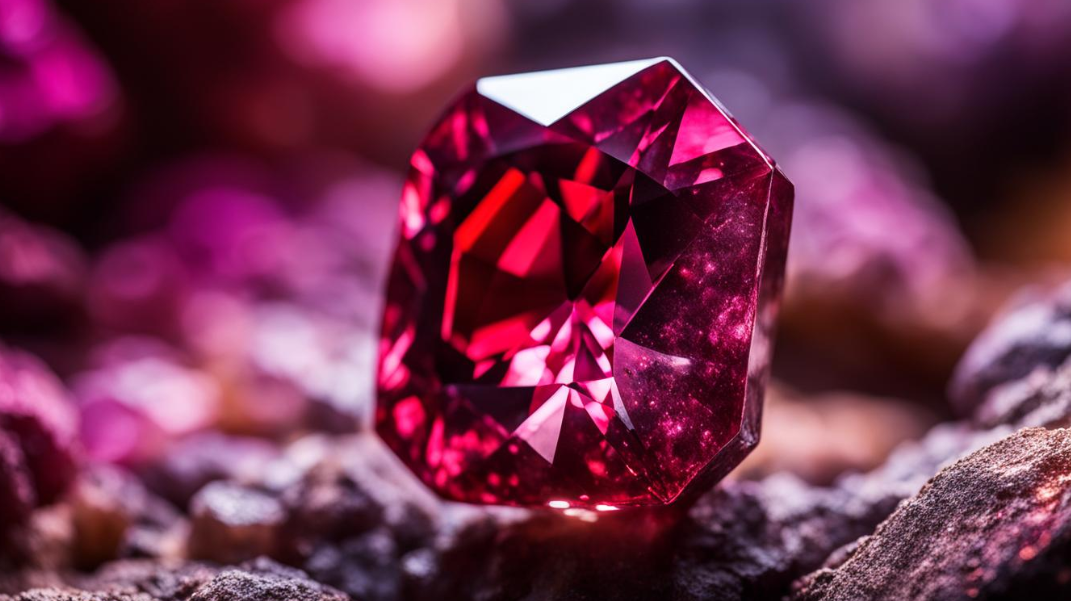
Where Is The Gemstone Sodalite From?
Sodalite's beautiful blue color has been used in jewelry and art for hundreds of years. Its journey from the deepest parts of the Earth to human hands is a fascinating story that spans continents. As early as 1811, Europe "discovered" it, but Greenland, which is where it first appeared, had known about it for thousands of years. But that's not the end of the story. The places where sodalite comes from are as varied as its colors. It comes from huge, gem-quality deposits in Canada to the ancient trade routes of Peru.
Come with me on a gemological adventure as we follow this beautiful stone around the world, trying to figure out where it came from and the many cultures it has touched.
Get ready to be amazed by the stories that are hidden in each sparkling blue gem.
The Formation and Composition of Sodalite Minerals
Sodalite, a captivating gemstone, is formed in plutonic igneous rocks under specific environmental conditions. It belongs to the cubic crystal system and exhibits a distinctive hextetrahedral shape. To understand its fascinating properties, let's delve into sodalite's chemical structure, crystal system, and its range of vibrant colors and varieties.
Understanding Sodalite's Chemical Structure
The chemical composition of sodalite is comprised of an aluminosilicate cage network, with sodium cations and chloride anions. This unique structure forms a zeolite cage with two cavities in each unit cell.
The chemical formula for sodalite is Na8(Al6Si6O24)Cl2, representing the arrangement of atoms in its composition. This distinct arrangement contributes to the gemstone's beauty and durability.

Classification and Crystal System of Sodalite
Sodalite is classified as a tectosilicate, a subgroup of silicate minerals. It belongs to the cubic crystal system, which gives it its well-defined shape. The cubic crystal system also imparts optical characteristics such as isotropic behavior, where sodalite appears the same from all directions under a microscope. This property contributes to sodalite's consistent and vibrant color display.
Distinctive Colors and Varieties of Sodalite
Sodalite exhibits a range of distinctive colors and beautiful varieties. Its most renowned color is a rich royal blue, often with white vein-like patterns, resembling lapis lazuli. However, sodalite can also occur in shades of green, yellow, violet, and even colorless varieties. These variations add versatility and intrigue to sodalite as a gemstone, captivating the eyes and enhancing its aesthetic appeal.
Where is the Gemstone Sodalite From?
Sodalite is found in various locations around the world. Major deposits of sodalite can be found in Canada, specifically in Ontario and British Columbia. Other notable sources include Greenland, Afghanistan, Brazil, Bolivia, Portugal, Romania, Myanmar, and Russia. These locations have rich deposits of sodalite and contribute to the global supply of this gemstone. Understanding the geographical origin of sodalite adds to its value and appreciation as a unique and sought-after gemstone.
| Country | Major Mining Areas |
|---|---|
| Canada | Ontario, British Columbia |
| Greenland | Kapisillit, Narsaq, Qeqertarsuatsiaat |
| Afghanistan | Kabul, Laghman |
| Brazil | Bahia, Minas Gerais |
| Bolivia | Chayanta Province, Potosí Department |
| Portugal | Barroso, Beira Baixa |
| Romania | Sebeș, Deva, Brad |
| Myanmar | Mandaly, Mogok |
| Russia | Kola Peninsula, Murmansk Oblast |

These extraction sites have played a crucial role in meeting the global demand for sodalite and have contributed to its widespread availability in the market. The sodalite sourced from these mining locations reflects the unique geological compositions and characteristics of each region, adding to the diversity and allure of this captivating gemstone.
Sodalite's Royal History and European Discovery
Sodalite has a fascinating history that spans centuries and involves ancient civilizations and European explorers. From its early trade to its discovery in Greenland, sodalite has captivated people and evolved into a highly valued ornamental gemstone.
The Caral Culture and Pre-European Trade of Sodalite
The Caral culture, which thrived in Peru around 2,600 BC, recognized the beauty and significance of sodalite. They traded for sodalite, appreciating its deep blue hue and mystical qualities. Similarly, the residents of Tiwanaku in Bolivia engaged in pre-European trade involving sodalite, highlighting its desirability and cultural significance.
The 1811 Discovery in Greenland
In 1811, European explorers made a significant discovery in the Ilimaussaq complex in Greenland. This marked the first recorded encounter with sodalite by Europeans. The vibrant blue stone entranced them, and they recognized its potential as a gemstone. This discovery laid the foundation for further research and appreciation of sodalite.
While sodalite's European discovery piqued interest, it wasn't until 1891 that the gemstone gained prominence as an ornamental stone. Vast deposits were found in Ontario, Canada, opening up a world of possibilities for sodalite as a gemstone. The unique blue color, coupled with its cultural significance, led to its rise in popularity and increased demand as an ornamental gem.

| Discovery | Description |
|---|---|
| The Caral Culture and Tiwanaku residents | Recognized sodalite's beauty and engaged in pre-European trade |
| 1811 European Discovery | Explorers encountered sodalite in Greenland's Ilimaussaq complex |
| 1891 Ascendance as an Ornamental Gem | Large deposits found in Ontario, Canada, leading to increased popularity |
Sodalite's fascinating history, from its early trade to its European discovery and eventual rise as an ornamental gem, demonstrates its enduring allure and cultural significance.
Uncovering Sodalite: Key Global Locations
Sodalite is mined in various locations around the world, ensuring its availability and supply. Let's take a look at some of the most notable sodalite sources around the world.
One of the largest deposits of sodalite can be found in Canada, specifically in Ontario and British Columbia. These regions have significant mining operations that contribute to the global sodalite supply, making Canada a key player in the industry.
Greenland is another important source of sodalite. The 1811 discovery in the Ilimaussaq complex established Greenland as a significant sodalite mining area. Greenlandic sodalite has distinct properties that make it highly sought after.
Afghanistan is also well-known for its sodalite deposits, which are found in the country's rugged terrain. Sodalite mined in Afghanistan is known for its deep blue color and high quality.
Brazil, Bolivia, Portugal, Romania, Myanmar, and Russia all have significant sodalite resources, which contribute to the global supply chain. These countries have large deposits of sodalite and play an important role in meeting the demand for this beautiful gemstone.

Understanding the physical properties of sodalite is important for gemstone enthusiasts and jewelry designers. Let's delve into the key physical characteristics that make sodalite a unique and appealing gemstone.
Mohs Scale Hardness and Gemstone Tenacity
Sodalite has a Mohs hardness of 5.5-6, making it relatively hard compared to other gemstones. However, it is still susceptible to scratching, so it is essential to handle sodalite jewelry with care to maintain its beauty and luster. With proper care, sodalite can withstand everyday wear and make a lasting statement in jewelry pieces.
The Optical Qualities of Sodalite
Sodalite exhibits distinctive optical qualities that enhance its visual appeal. It has a dull vitreous to greasy luster, giving it a subtle shine that adds elegance to any jewelry design. Sodalite is transparent to translucent, allowing light to pass through and create beautiful reflections and play of colors.
Fluorescence and Unique Reactions to UV Light
Sodalite's fluorescence under certain lighting conditions is one of its most intriguing properties. Sodalite fluoresces bright red-orange under cathodoluminescence and UV light. This distinct reaction to light adds a captivating dimension to sodalite jewelry and makes it a sought-after gemstone for those who value individuality.

| Physical Property | Description |
|---|---|
| Mohs Hardness | 5.5-6 |
| Tenacity | Relatively hard but susceptible to scratching |
| Luster | Dull vitreous to greasy |
| Transparency | Transparent to translucent |
| Optical Qualities | Isotropic optics, allowing for beautiful reflections and play of colors |
| Fluorescence | Bright red-orange under cathodoluminescence and UV light |
Exploring Sodalite Occurrences and Mining Areas
The geological occurrences and mining areas of sodalite provide invaluable insights into the formation and extraction of this captivating gemstone. With its rich deposits, Canada emerges as a prominent source of sodalite, with significant occurrences in Ontario and British Columbia. African and European countries also boast productive sodalite mines, contributing to the global supply of this precious gemstone.
Sodalite is commonly found in vein formations within plutonic igneous rocks. These rocks, which form deep beneath the Earth's surface, undergo slow cooling, allowing the crystal structure of sodalite to develop. The interaction of minerals and geological processes over millions of years gives rise to the distinctive formation and composition of sodalite.

Jewelry designers and gemstone enthusiasts are very interested in the Canadian sodalite deposits, particularly those in Ontario and British Columbia. The mines in these areas yield high-quality sodalite that showcases the gem's vibrant blue color and exquisite patterns. The extraction and processing of sodalite from these Canadian mines play a crucial role in meeting the global demand for this unique gemstone.
Across African and European regions, sodalite mines contribute to the availability and variety of this beautiful gemstone. These mining areas employ advanced techniques to extract sodalite from the Earth, ensuring that it reaches the hands of artisans and jewelry professionals worldwide. With each mining operation, sodalite's allure and significance are further revealed.
Hackmanite: The Chameleon of the Sodalite Family
Hackmanite is a variety of sodalite that exhibits a fascinating phenomenon known as tenebrescence. This unique characteristic causes the color of the stone to change upon exposure to light, earning hackmanite the reputation as the chameleon of the sodalite family. Its color can range from violet-red to green and may even fade to white when exposed to sunlight. This captivating attribute adds to the intrigue and fascination surrounding sodalite and its variants.
Hackmanite can be found in various locations, including Canada and Greenland. Its distinctive color-changing properties make it a sought-after gemstone for collectors and jewelry enthusiasts alike.
Historical Uses and Beliefs Associated with Sodalite
Sodalite has a rich history, with cultural significance dating back to ancient civilizations. It was highly valued for its beauty and believed to possess mystical properties.
Let's explore the cultural significance, symbolism, and historical uses of sodalite in more detail.
Cultural Significance and Early Traded Gemstone
Sodalite held great cultural significance for ancient civilizations. The Caral culture in Peru and the residents of Tiwanaku in Bolivia recognized its allure and traded it as a precious gemstone.
Sodalite was highly valued for its vibrant blue color and was considered a symbol of wealth and status. It was often used to create intricate jewelry and ornamental pieces.
Symbolism and Lore Surrounding Sodalite
Sodalite has a variety of symbolic meanings and is thought to have spiritual and metaphysical properties. It is thought to improve communication and encourage self-expression, making it a popular gemstone for public speakers, artists, and writers.
Sodalite is also thought to boost intuition and insight, allowing people to tap into their inner wisdom. Sodalite is also associated with balancing emotions, promoting calmness, and emotional stability.
Sodalite in Ancient Civilizations
Ancient civilizations across the globe recognized and treasured sodalite. The Egyptians used sodalite in their artwork and believed it had protective properties, guarding against negative energies. In Greek mythology, sodalite was associated with the goddess Athena, the deity of wisdom and knowledge. The Mayans revered sodalite, carving it into sacred amulets and using it in rituals and ceremonies.

| Ancient Civilizations | Historical Uses of Sodalite |
|---|---|
| Egyptians | Used in artwork and believed to possess protective properties |
| Greeks | Associated with the goddess Athena, symbolizing wisdom and knowledge |
| Mayans | Carved into amulets, used in rituals, and revered as a sacred stone |
The historical uses and beliefs associated with sodalite highlight its enduring significance throughout the ages. This gemstone continues to captivate and inspire us, with its rich cultural heritage and remarkable beauty.
Sodalite's Role in Modern Jewelry and Ornamentation
Sodalite continues to play a prominent role in modern jewelry and ornamentation. From rough stones to polished gemstones, sodalite is transformed into beautiful jewelry pieces.
From Rough Stone to Jewelry Piece
Artisans employ various crafting techniques to showcase the unique beauty of sodalite. They use techniques such as faceting, cabochon cutting, and bead stringing to create stunning jewelry pieces that highlight the vibrant blue color and intricate patterns of sodalite.
One of the most popular forms of sodalite jewelry is beads. The smooth, polished beads are used to create necklaces, bracelets, and earrings. They can be combined with other gemstones for a colorful and eye-catching look.
In addition to beads, sodalite is often used as a centerpiece in rings, pendants, and brooches. Its deep blue color and distinct veining make it a captivating focal point in any piece of jewelry.
The craftsmanship of sodalite jewelry requires skill and attention to detail. Jewelry artisans carefully select and shape each sodalite gemstone to enhance its natural beauty and create unique designs.
Crafting Techniques and Sodalite Carvings
Sodalite carvings are highly sought after by collectors and enthusiasts. Skilled craftsmen carefully carve intricate designs and patterns into the surface of sodalite gemstones, showcasing the stone's veining and adding texture to the finished piece.
Sodalite carvings can take various forms, from small figurines and sculptures to ornate decorative items such as vases and bowls. The detailed craftsmanship and artistic expression make sodalite carvings highly prized.
Color Enhancements and Synthetics
In some cases, sodalite gemstones may undergo color enhancements to intensify or alter their natural hue. These enhancements can include techniques like heat treatment, which can deepen the blue color and enhance the stone's overall appearance.
It is worth noting that while color enhancements can improve the visual appeal of a sodalite gemstone, they should be disclosed by reputable sellers to ensure transparency and informed buying decisions.
Synthetic sodalite, also known as lab-grown sodalite, is created in a laboratory environment using chemical processes that mimic the natural formation of sodalite. These synthetic gemstones can offer an affordable alternative to natural sodalite while retaining the same beauty and characteristics.
| Jewelry Type | Crafting Technique | Description |
|---|---|---|
| Beaded Jewelry | Stringing beads | Sodalite beads are carefully strung together to create necklaces, bracelets, and earrings. |
| Rings | Setting | Sodalite gemstones are set in metal mounts to create unique and eye-catching rings. |
| Pendants | Wire wrapping | Sodalite stones are wrapped in wire, creating a beautiful and delicate pendant that can be worn as a necklace. |
Conclusion
Sodalite is a fascinating gemstone with a rich geological history and cultural significance. Its unique formation, composition, and physical properties make it desirable. We know sodalite is a cubic crystal system formed in silica-undersaturated environments. Its hextetrahedral shape and zeolite cage structure make it a unique gemstone.
Ancient civilizations like the Caral culture in Peru and Tiwanaku in Bolivia traded sodalite. Its symbolism in these cultures enhances its value. Today, sodalite is prized for its beauty and used in jewelry and ornamentation.
Sodalite is loved by collectors, enthusiasts, and jewelry lovers for its vibrant blue color, unique optical qualities, and symbolic meaning. For artisans and designers, its global mining supply ensures a steady supply. In conclusion, sodalite is a gemstone with natural beauty, historical significance, and modern appeal.
FAQ
What is sodalite?
Sodalite is a tectosilicate mineral with the chemical formula Na8(Al6Si6O24)Cl2. It is known for its beautiful royal blue color and is widely used as an ornamental gemstone.
How is sodalite formed?
Sodalite is formed in plutonic igneous rocks, specifically in silica-undersaturated environments. It belongs to the cubic crystal system and has a distinctive hextetrahedral shape.
Where is sodalite found?
Sodalite can be found in various locations around the world, including Canada (Ontario and British Columbia), Greenland, Afghanistan, Brazil, Bolivia, Portugal, Romania, Myanmar, and Russia.
What is the history of sodalite?
Sodalite has a rich history and has been traded and used by ancient civilizations. The Caral culture in Peru and the residents of Tiwanaku in Bolivia traded for sodalite as early as 2,600 BC. Europeans first discovered sodalite in 1811 in Greenland.
What are the physical properties of sodalite?
Sodalite has a Mohs hardness of 5.5-6 and a dull vitreous to greasy luster. It is transparent to translucent and exhibits isotropic optics. Sodalite also fluoresces bright red-orange under cathodoluminescence and UV light.
How is sodalite mined?
Sodalite is mined in various global locations, including Canada (Ontario and British Columbia), Greenland, Afghanistan, Brazil, Bolivia, Portugal, Romania, Myanmar, and Russia.
What is hackmanite?
Hackmanite is a variety of sodalite that exhibits tenebrescence, a phenomenon where the color of the stone changes upon exposure to light. It can be found in locations such as Canada and Greenland.
What are the historical uses and beliefs associated with sodalite?
Sodalite has been traded and valued by ancient civilizations for its beauty and perceived mystical properties. It holds various symbolic meanings and has been associated with ancient civilizations such as the Egyptians, Greeks, and Mayans.
How is sodalite used in modern jewelry and ornamentation?
Sodalite is transformed into beautiful jewelry pieces, including faceted gemstones, cabochons, and bead stringing. Sodalite carvings are also highly sought after, featuring intricate designs and patterns.


